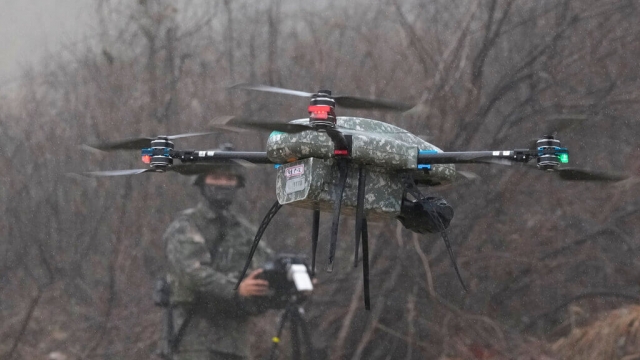Military strikes in a future of drone warfare are more stealthy, more agile and potentially more effective.
"It's like when the tank came on the scene and when the submarine came on the scene, when the machine gun entered the the scene in the beginning," Lt. Col. Daniel Davis told Scripps News.
But the recent militant strike on a military base in Jordan that killed three U.S. servicemembers and injured dozens more begs the question: Are we ready for this future?
"You know in terms of capabilities, there is a huge difference across the [NATO] alliance," said Federico Borsari, a fellow at the Center for European Policy Analysis.
Borsari co-authored research concluding some NATO powers are ill-prepared to counter enemy drones.
"I would say we are slightly beyond the curve, yes. And currently the problem is to have the right combination of detectors and effectors when a drone attack is coming," Borsari said.
Several news outlets report an early analysis of the attack in Jordan shows U.S. forces confused the attacking drone for a U.S. craft returning from a training run.
"Identifying flying objects, in the case of drones, can be particularly difficult because we're talking about systems that are not very big," Borsari said.
SEE MORE: Former CENTCOM commander discusses Gaza, wider conflicts
U.S. Officials note Iran’s militant proxies have tried to use drones this way before – and will try again.
“This wasn't the first drone attack on an American facility in the region," said National Security Council spokesman John Kirby. "There have been others. And the fact that this one had lethal consequences doesn't mean that the previous ones weren't intended by these Iran-backed militias to have that same effect.”
"There's some questions as to whether it was identified at all," Davis said.
Davis, with foreign policy analysis group Defense Priorities, believes some U.S. adversaries may be learning lessons from other global conflicts, including the war in Ukraine, to understand how to take advantage of drone defense vulnerabilities.
"I think that it's it's at least theoretically possible that the reason why this got through our defenses is because of some lessons that have been learned from both the Russian and the Ukraine side in that war," Davis said. "And those lessons are starting to get out."
But the threats are far from limited to militant groups. Adversarial governments pose perhaps the biggest risk to an underprepared west.
An analysis from the Teal Group says the U.S. and Israel still dominate the global drone market, but "new players such as China and Turkey are challenging the United States in its traditional markets in the mid-East. Their drones enjoy a price advantage and are sold without Washington’s intrusive requirements."
The group predicts countries will spend more than $180 billion over the next 10 years on drone procurement.
"I think that the side that that figures out how to block the other side's drones is going to have huge advantage of the next time," Davis said. "And I would be putting more money in counter drone technology, even, than in offensive drone technology."
Trending stories at Scrippsnews.com



